I’ve had a busy (but productive) couple of days in the kitchen…
Wild Alaskan sockeye salmon season has arrived! The sockeye run in Alaska from late-May to early- August. Check out this cool photo of a hungry bear (and this one too).
Sockeye salmon’s naturally rich and stunning shade of orange is a feast for the eyes. Ever wonder why wild salmon are so much more intense in color than their farm-raised counterparts? In the wild, salmon absorb carotenoids from eating pink krill, which also contributes to its high levels of omega-3 fatty acids. On the contrary, farm-raised salmon are dyed pink (with the chemical canthaxanthin).
Could go on and on about the the differences between wild and farm-raised salmon (you can read more here), but I’d rather just concentrate on the good stuff — that being, how delicious freshly caught wild sockeye salmon tastes.
Didn’t grow up in a family that was “into” food, just your typical suburban 1970s-80s frozen dinner/convenient food family. My parents, second generation Americans, retained few of their Eastern European ancestors’ culinary traditions. However, whenever we had family gatherings, there was typically (a deli platter) chopped liver (wouldn’t go near it as a child, but might reconsider now), and gravlax or cold-smoked salmon, served with rye bread or NYC bagels (really, are there any others?). Have long since ditched the frozen dinners in search of fresher pastures, but love just about any type of cured or smoked fish.
Was eagerly awaiting freshly caught wild sockeye salmon to come into season so I could try my hand at curing. And jackpot, it was on sale the other day such that I snatched up a healthy sized piece (just about a pound and a quarter).
I’ll let you in on a little secret — curing salmon is easy.
Instead of the traditional pairing of cream cheese and lox, I paired my homemade gravlax with a local goat’s cheese, all on top of homemade rye bread, and finished with a drizzle of some peppery extra-virgin olive olive.
This olive oil comes from a friend of ours whom we met in Crete (Greece) several years ago. We caught up with Stamatis for dinner at a Greek restaurant in Philadelphia a few months back while he was visiting the United States. He gave us a bottle of his olive oil (that he produces himself in Crete). That’s one of the great things about travel — the interesting people you meet along the way — and, of course, the abundance of great food and wine to share with them.
It’s best to slice the gravlax as thin as possible (paper thin). Though, this requires a very sharp knife or fish knife (even better); neither of which I possess at the moment.
Curing the salmon….
The Curing Process…
Kept it pretty traditional. At a minimum, you’ll need salt and pepper, sugar, and herbs if you like (such as dill or fennel fronds). I also added a bit of hot smoked paprika along with toasted and crushed coriander and fennel seeds. Get creative and add spices and/or herbs of your choosing. Most recipes call for some type of alcohol, such as Aquavit (a Scandinavian spirit infused with caraway, lemon peel, fennel, and aniseed), but I only had ouzo on hand and didn’t feel like making another trip to the store. Got the idea of using ouzo from Souvlaki for the Soul; the author made an ouzo cured salmon that looked quite tasty.
All you need to do is rub the salt-spice mixture all over the salmon, pour the alcohol on top (if using), cover with the fresh herbs, and then wrap in cheesecloth and/or plastic wrap; cheesecloth is nice because it absorbs some of the moisture from the salmon. Then, place in the fridge and patiently wait 48 hours for the salmon to cure. Piece of cake.
Now that my salmon is curing, just need something tasty to put it on…how about Vollkornbrot?
Vollkornbrot? Ever try it? Volkornbrot is a dense, moist German 100% rye bread.
First discovered Volkornbrot while living in Chicago; there are a few Austrian bakeries scattered around the city that still bake traditional, hearty breads. Have also found Vollkornbrot at Zingerman’s in Ann Arbor, MI. Other than that, Volkornbrot is difficult to come by. This is not the type of bread most people are accustomed to nowadays, but I am confident that Volkornbrot will win you over if you give it a try.
This version comes from Jeffrey Hamelman. It’ a sourdough rye bread made from chopped rye (or cracked rye, since rye chops are hard to procure) and rye meal — a whole lot of whole grain goodness. This is a dense bread (each loaf weighing close to 2 pounds), with a crispy crust and a soft, moist, and chewy interior. It keeps for weeks in the refrigerator.
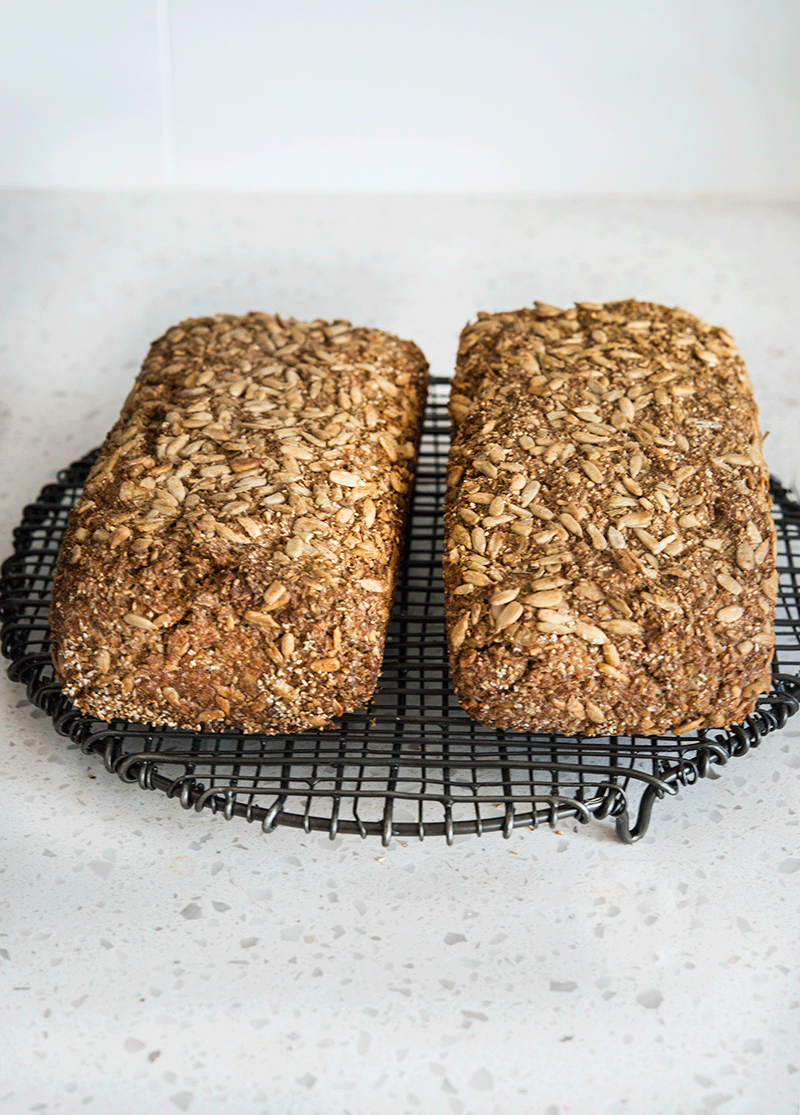
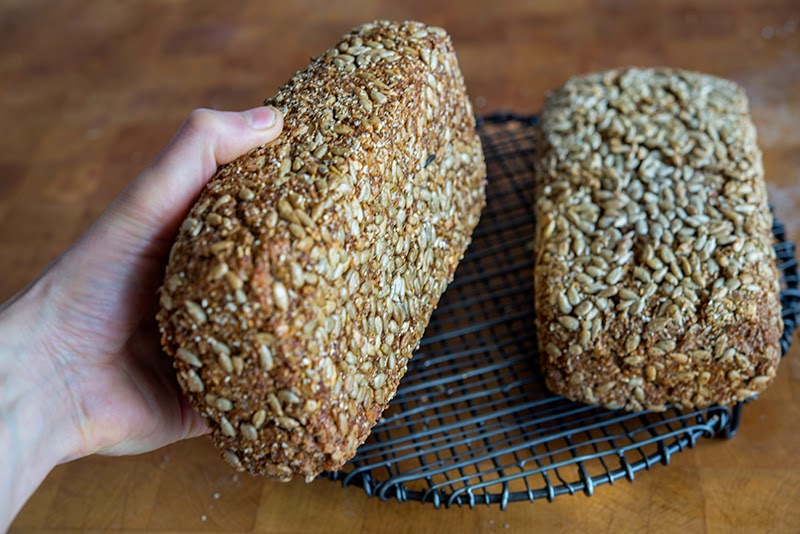
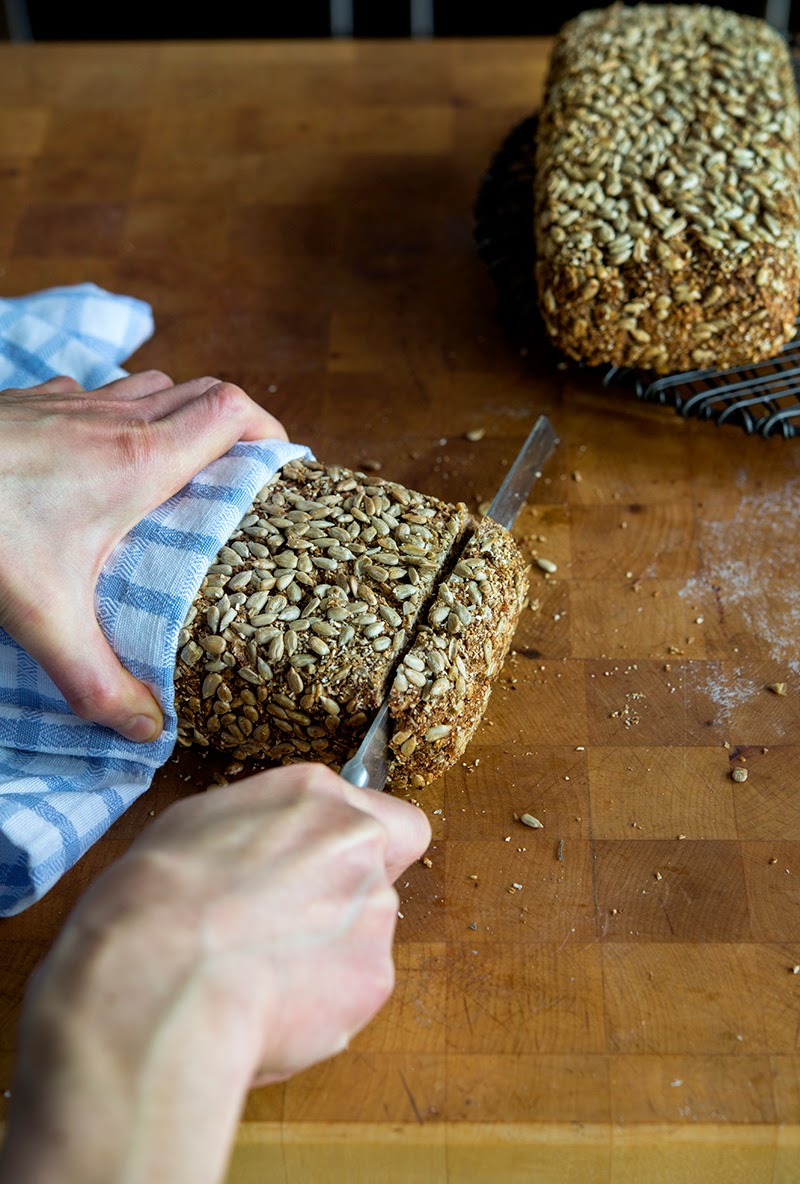
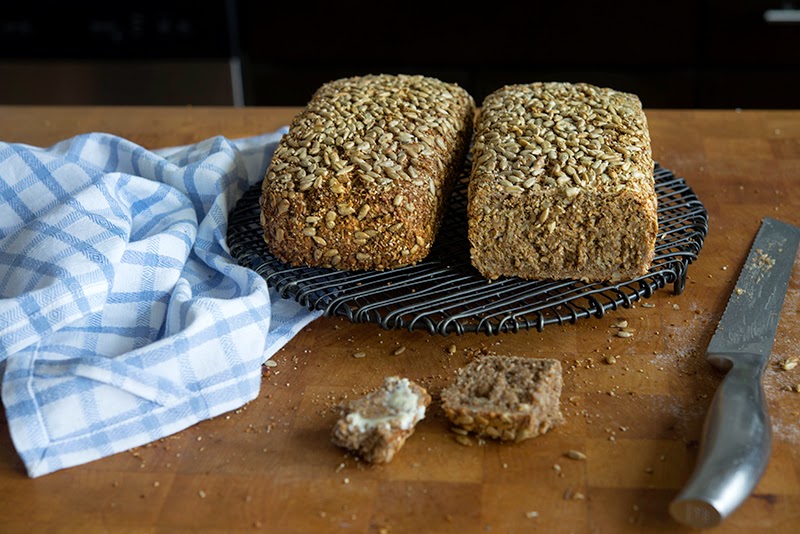
Traditionally, Volkornbrot is baked in a Pullman pan; Hamelman calls for a 13 x 3 3/4 x 3 3/4 Pullman pan to accommodate a 4 1/2 pound loaf. I had to improvise, dividing the dough in half and baking in two 9×5 loaf pans (worked out just fine).
Hamelman recommends waiting 48 to 72 hours before slicing the Volkornbrot to allow the bread to develop flavor as it rests. I confess…I couldn’t wait and sliced a piece shortly after it came out of the oven.
I love edible flowers; these are onion flowers…
Gravlax
for 1-pound of salmon (skin on)
3 tablespoons sea salt
2 tablespoons brown sugar or palm coconut sugar
1 1/2 tablespoons smoked paprika
1 tablespoon black pepper
2 teaspoons toasted and crushed coriander seed
2 teaspoons toasted and crushed fennel seed
2 tablespoons alcohol (such as Ouzo or Aquavit)
1/2 bunch of dill, roughly chopped
With tweezers, remove any pin bones from the salmon.
In a bowl, mix the salt, sugar, paprika, black pepper, and coriander, fennel. Spread out a large (double layer) of cheesecloth — larger than the piece of salmon. Spread 1/3 of the salt-spice mixture on the cheesecloth. Place the salmon on top and cover with the remaining salt-spice mixture, rubbing all over the top of the salmon. Pour the alcohol on top. Scatter the dill over the salmon. Wrap in the cheesecloth and then wrap tightly in plastic wrap. Place in the refrigerator and let cure for 48 hours.
48 hours later…
Unwrap the salmon and rinse the cure off under cold, running water. Pat dry and slice on a bias into paper-thin slices.
Vollkornbrot
Adapted slightly from Jeffrey Hamelman’s Bread: A Baker’s Book of Techniques and Recipes
Hamelman if very exact on his measurements. My scale is not so exact, so I’ve rounded (for precise measurements please refer to his book). I ordered the rye meal and cracked rye from Bob’s Red Mill.
For the Rye Sourdough:
13 ounces rye meal
13 ounces water
2 tablespoons plus 1 teaspoons sourdough starter
Pour the water over the sourdough starter and stir to dissolve. Add the rye meal and mix until thoroughly hydrated. Cover.
For the Soaker:
10 ounces rye chops (or cracked rye)
10 ounces water
If using rye chops, pour cold water over the chops. If using cracked rye, first boil the water (since cracked rye doesn’t absorb water as readily as chops), and then pour over the cracked rye. Cover with plastic to prevent evaporation.
Allow the rye sourdough and soaker to stand at room temperature (~70 degrees) for 14 to 16 hours.
For the Final Vollkornbrot Dough:
8 ¾ ounces rye meal
3 ounces water
1 tablespoon salt
1 ¾ teaspoon instant dry yeast
2 ounces sunflower seeds (plus extra for topping)
Rye Sourdough (from above)
Soaker (from above)
Add all the ingredients to the bowl of a spiral mixer, including the rye sourdough and soaker. Mix on first speed only for 10 minutes. Desired dough temperature = ~85 degrees.
Bulk Ferment: 10 to 20 minutes.
Prepare a 13×3 3/4×3 3/4 Pullman loaf pan or 2 (9x5x2.5) loaf pans by lightly oiling and dusting with rye meal.
Shape into one 13×4-inch log (if using a Pullman pan) or two 9×5-inch logs if using two loaf pans.
Sprinkle the sides and tops with sunflower seeds and gently push down so they stick. Place the logs in the prepared pans. Sprinkle a thin layer of whole-rye flour or rye meal over top.
Cover the loaves with plastic.
Final Proof:50 to 60 minutes at 82 degrees.
Baking:
Preheat the oven 470 degrees.
To create steam: add 1 cup of boiling water poured into a heavy steam pan, preferably cast iron and place at the bottom of the oven. Place the pans in the oven and bake for 15 minutes at 470 degrees, then lower the oven temperature to 380 degrees and bake for approximately 1 1/4 hours more.
Fifteen minutes before the end of baking, remove the bread from the pans, and finish the bake on sheet pans in order to firm up the side walls.
Cool: Let the loaves cool completely on a wire rack at room temperature. Wrap the Vollkornbrot in linen and store in a cool, draft-free place. Let rest for about 48 to 72 hours before slicing to allow the bread to fully develop its flavor. Slice thin.
Storage: Vollkornbrot will keep for several weeks wrapped in plastic and refrigerated.
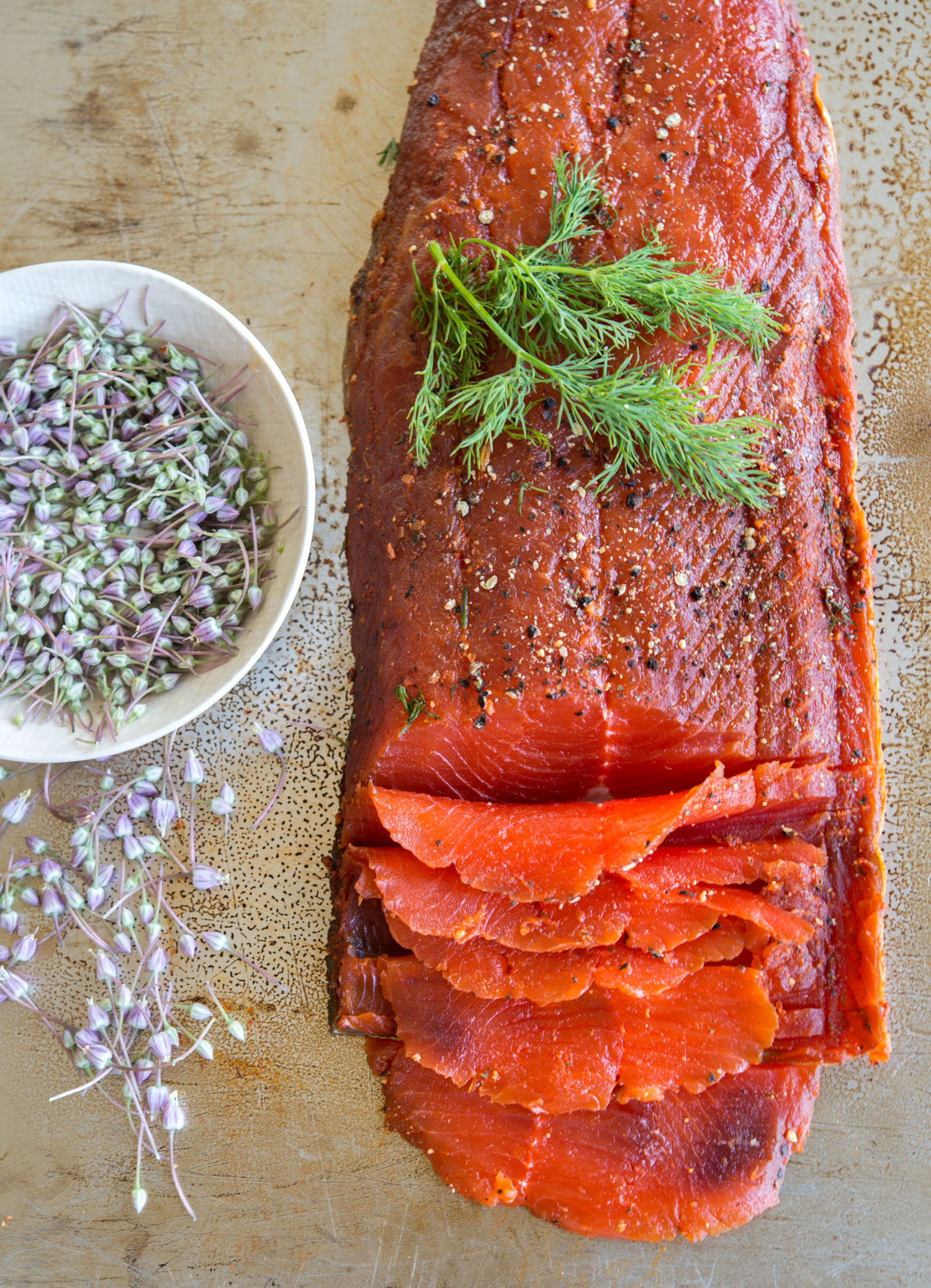

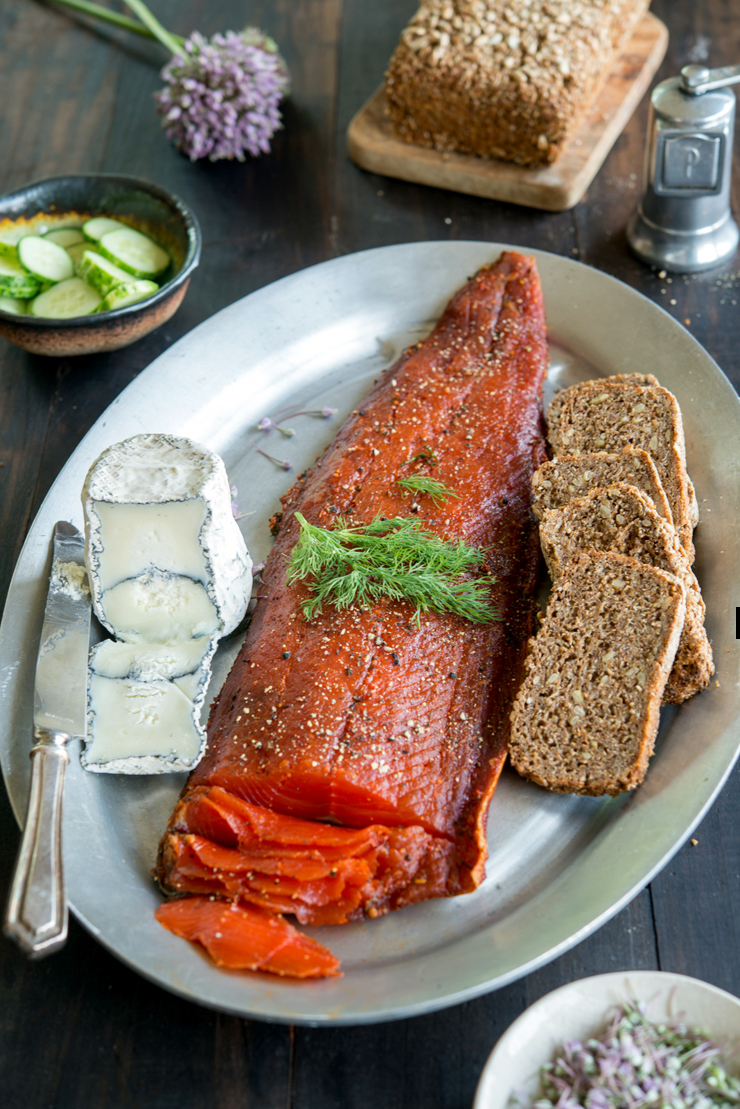







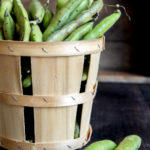
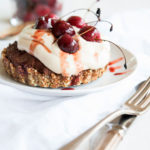
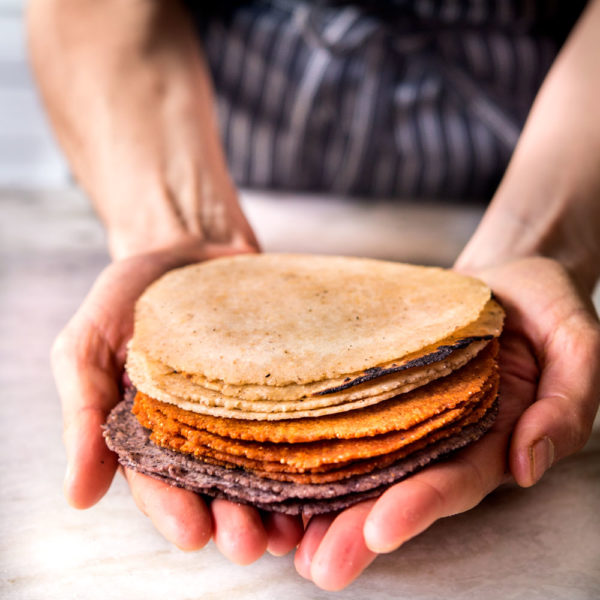
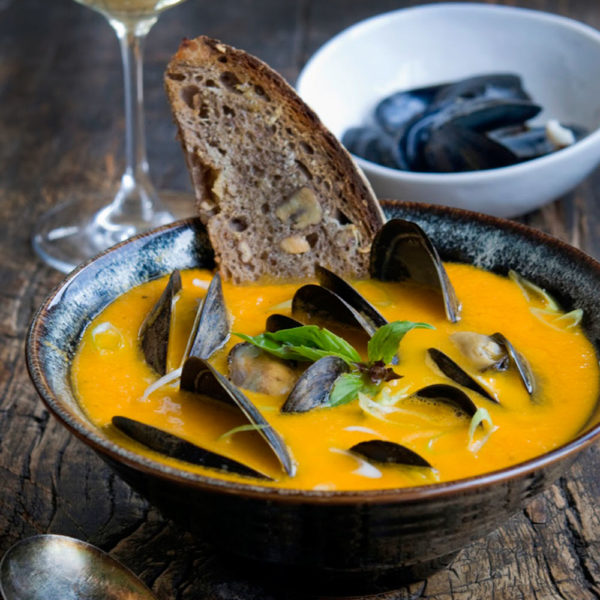
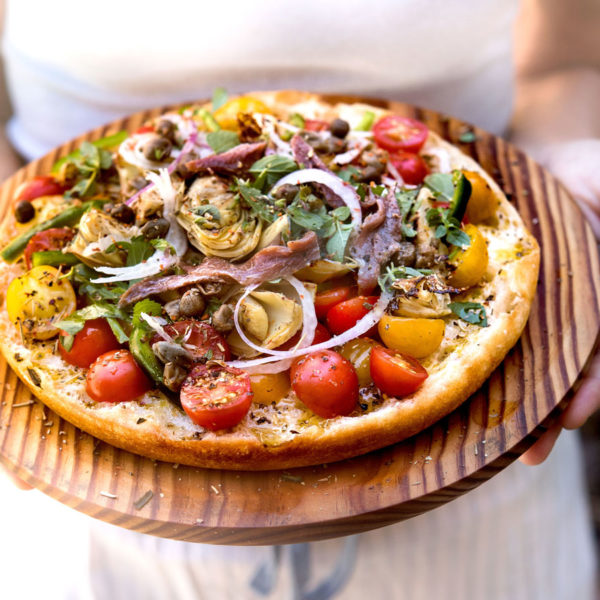


9 comments
Eva @ 1 Big Bite
I am a lover of graved salmon but it's your bread recipe that intrigues me.
And I also love your pictures!
Thanks for sharing.
Eva
Eva @ 1 Big Bite
I am a lover of graved salmon but it's your bread recipe that intrigues me.
And I also love your pictures!
Thanks for sharing.
Eva
Trine-Marie
Wow, this sounds (and looks) absolutely delicious! Now I kind of want to try it out myself – though I'm a little worried that I'll just mess it up.
-Maria
Trine-Marie
Wow, this sounds (and looks) absolutely delicious! Now I kind of want to try it out myself – though I'm a little worried that I'll just mess it up.
-Maria
Amy (Savory Moments)
This is an amazing post! What a great job you did and the photos are beautiful as always. I'd like to try this sometime. I love salmon – cured, smoked, etc.
Amy (Savory Moments)
This is an amazing post! What a great job you did and the photos are beautiful as always. I'd like to try this sometime. I love salmon – cured, smoked, etc.
Wild Greens and Sardines
Maria, you can totally make this. As far as bread goes, this is a pretty easy bread to make. The hardest part is tracking down some of these ingredients (I couldn't find cracked rye/rye chops or rye meal locally, but maybe you'll have better luck). The gravlax is really easy to make.
Wild Greens and Sardines
Maria, you can totally make this. As far as bread goes, this is a pretty easy bread to make. The hardest part is tracking down some of these ingredients (I couldn't find cracked rye/rye chops or rye meal locally, but maybe you'll have better luck). The gravlax is really easy to make.